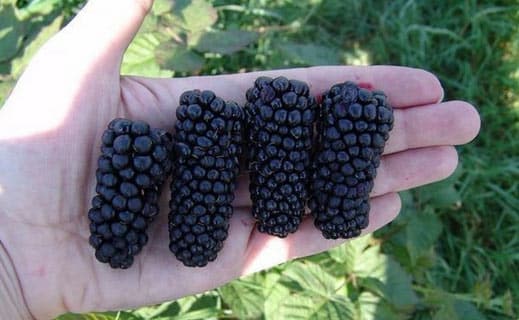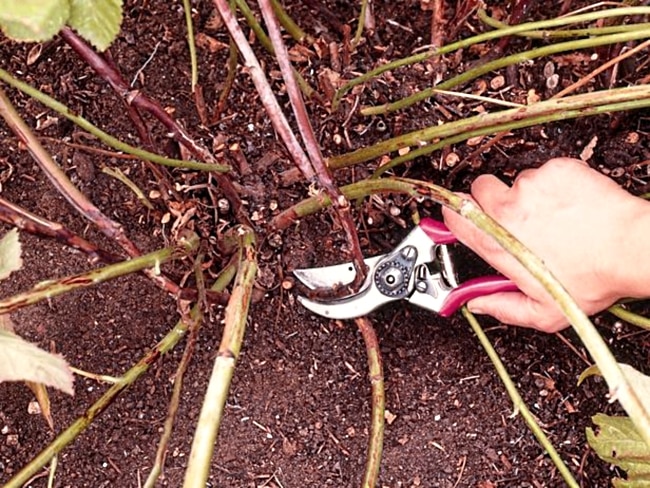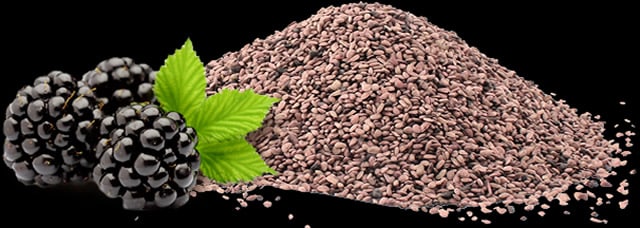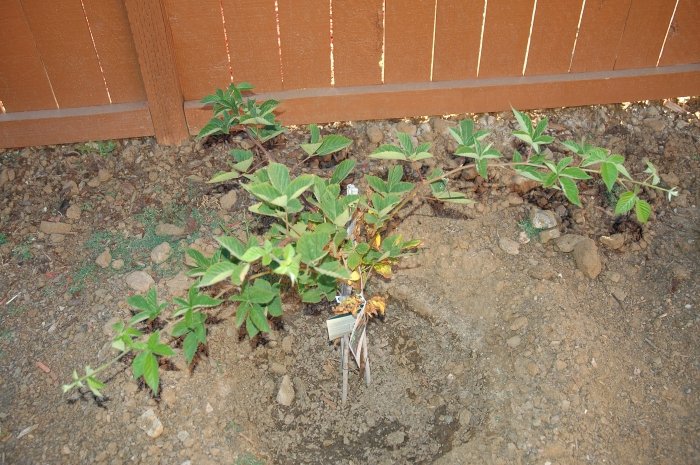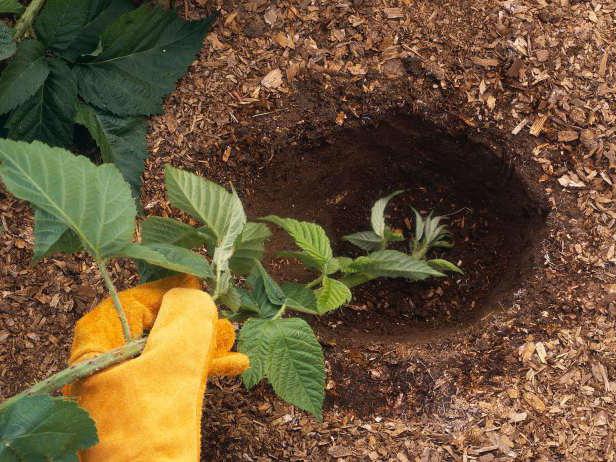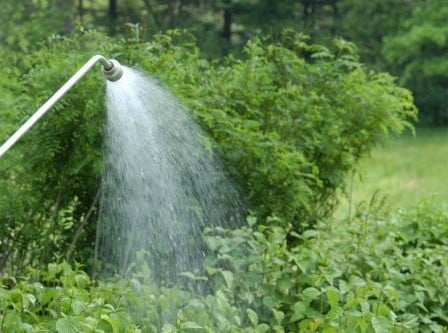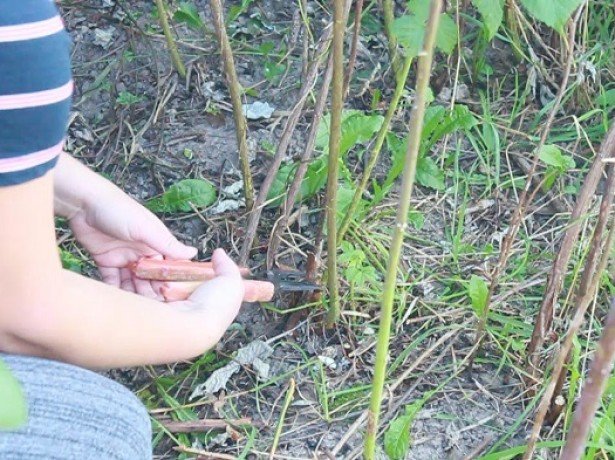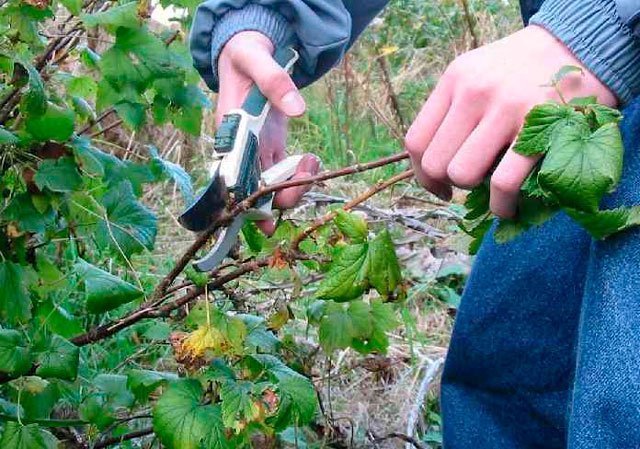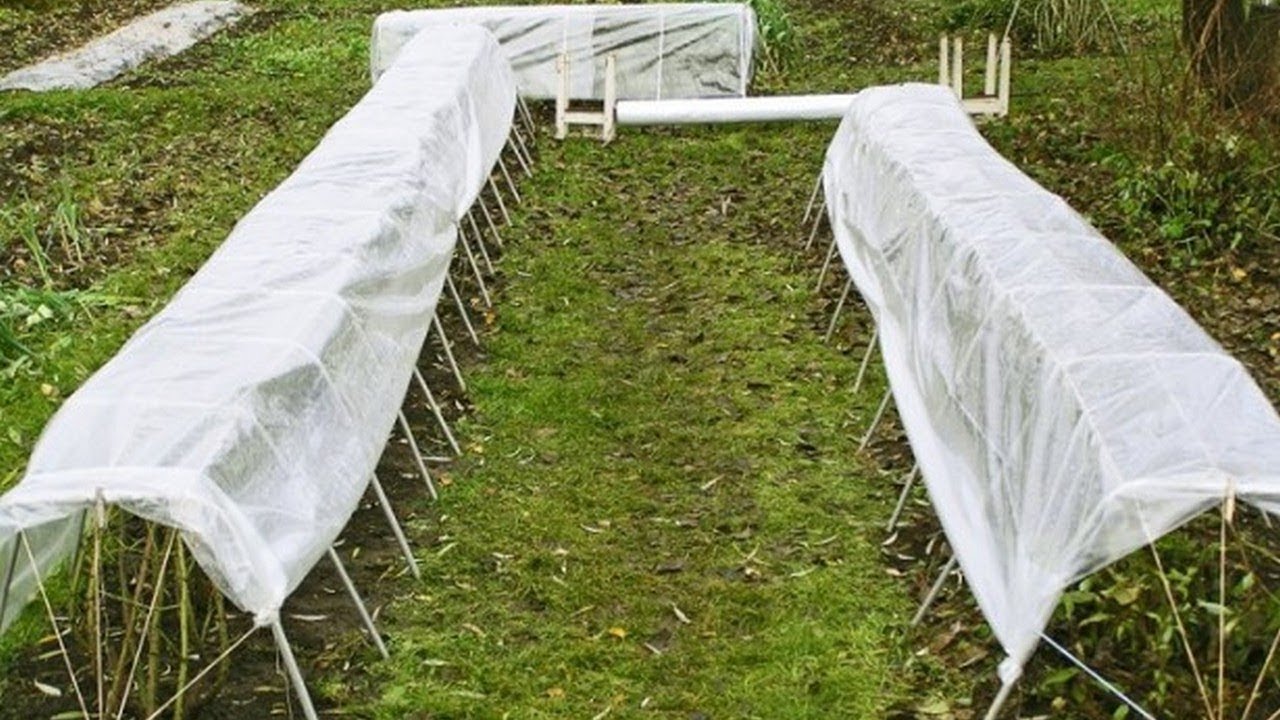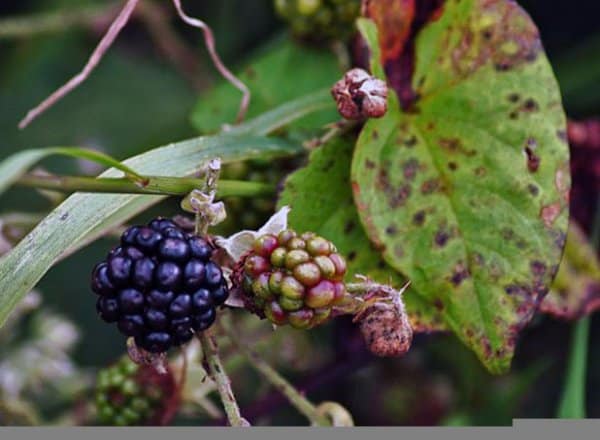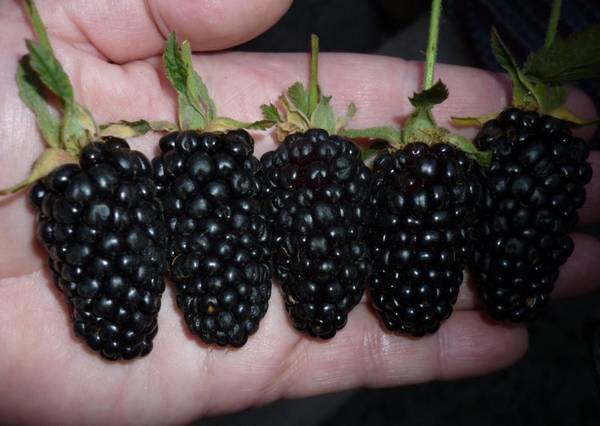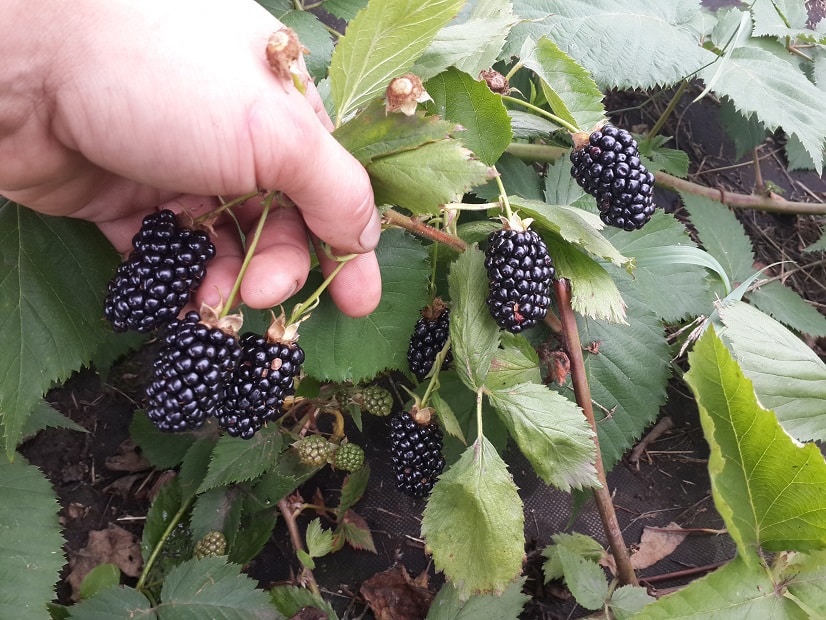Blackberries are often called black raspberries. Although these plants are relatives, they are different in terms of cultivation technology. The culture is rare in the gardens of European territory, but in America it is very popular. In our country, blackberries have settled in forests and on the banks of reservoirs. But they are already starting to cultivate berries in gardens. And here, in order to achieve good harvests, you need to know how to care for blackberries.
- Description of blackberry
- Popular varieties
- Blackberry propagation methods
- By layering
- Apical shoots
- Offspring
- Cuttings
- Seeds
- How to plant a crop correctly
- Blackberry planting dates
- Predecessors
- Preparation of supports
- Preparing a place for planting a seedling
- Distance between bushes
- Planting scheme
- Transplanting blackberries to a new place
- General rules for caring for blackberries
- Watering, loosening and mulching blackberries
- Trimming
- When to carry out
- Formation of an erect bush
- Formation of a bush of creeping varieties
- Fertilizing the crop
- Shelter for the winter
- Disease and pest control
- Blackberry harvest
- Caring for blackberries after fruiting
- Why doesn't it bear fruit?
Description of blackberry
Garden blackberries can be recognized by:
- powerful rhizome;
- flexible branches covered with small thorns or without thorns;
- trifoliate green leaves with toothed edges;
- white flowers with a pleasant aroma that attracts bees;
- black berries, consisting of drupes and a white stalk, sometimes with a bluish bloom.
Most often, blackberries are grown in central Russia, although they are also found beyond the Urals.
Popular varieties
Blackberry breeding is successful, so there are different varieties of the plant on the market:
- Thornless Tonfri is known for its unpretentiousness and frost resistance.
- Polar, in addition to its resistance to frost, produces high yields of sweet berries.
- An abundance of black fruits ripen on the numerous branches of the Chester bush.
- Kiov's large berries are sweet, juicy and can be stored for a long time without losing their presentation.
- Black Magic blackberries are remontant species that manage to produce crops all season long in the southern regions.
- Ruben blackberries ripen early, but may die from return frosts.
Each gardener can choose the appropriate variety, taking into account the climate and weather. There are also plants with long shoots, 4-5 meters long, and compact ones - 2 meters long.
Blackberry propagation methods
You can increase your blackberry plantation by propagation. Usually the procedure is performed in the fall, although it can be done in the spring and even in the summer.Even a novice gardener can get healthy new plant specimens.
By layering
Horizontal layers are bent to the soil surface and covered with earth. And so that they do not rise, they pin them down. You can secure the shoot simply with a stone. Stop the growth of the branch by cutting off the top. The cuttings are also sprinkled with mulch. Be sure to water it. After 2 months, you can separate the daughter branch from the mother branch, since it has already taken root. The seedling is cut off and transplanted to a new location.
Apical shoots
Annual cuttings are cut, leaving 2-3 buds on them. It is better to tear off the leaves and then place the shoots 15 centimeters long in a cool place. In February they are taken out and placed in water. The upper bud looks down and is in the water. It is necessary to constantly add liquid as it evaporates. When a sprout with roots appears from the bud, it is separated and placed in the ground. Similarly, all the buds are awakened by placing them one by one in water.
Offspring
You can expose the blackberry root system in the fall and cut cuttings 1.5 centimeters thick and 6-9 long. They are stored in a bag in the cellar or refrigerator. Then at the end of winter they germinate by immersing the container in the ground. You can cover the containers with film for a greenhouse effect. Blackberry seedlings will take root and produce leaves. In April they are planted in the garden.
Cuttings
Annual lignified shoots are suitable for cutting blackberry cuttings. The length of the planting material reaches 40 centimeters. It can be kept through the winter by burying it in the ground, or in the cellar, wrapped in a bag. At the same time, the cuttings must be ventilated. In the spring, after the snow melts, the branches are lightly trimmed and planted. A film is pulled over the top, preferably black. When the roots are formed, shoots are planted.
Seeds
Purchased blackberry seeds are planted either in spring or autumn. A seed can awaken in soil heated to 25 degrees Celsius. Place the seeds for seedlings in peat tablets or pots with nutrient soil. The planting depth of blackberry seeds is up to 4 millimeters. And the distance between them is 3 centimeters. It is necessary to water the seedlings regularly. And when they have 4 true leaves, they are planted in the beds.
How to plant a crop correctly
Growing blackberries requires compliance with the rules of agricultural technology. If you plant seedlings at the wrong time, they may die. The plant needs appropriate soil. And the optimal distance between the bushes is selected so that the plants have enough nutrition and water.
Blackberry planting dates
Unlike other Rosaceae, blackberries are best planted in the spring, when the soil is well warmed up. At this time, planting will be successful in areas with early frosts and severe frosts.
Can be planted in autumn in areas with warm or temperate climates. Depending on the region, shoots are planted from the second half of October to the end of November. To grow a crop successfully, it is necessary to prepare the area for it in advance.
Predecessors
Not every place on a summer cottage is suitable for berry crops. The plant needs a lighted place with fertile soil. You cannot plant where vegetables once grew. It is necessary to restore the balance of soil bacteria after garden plants. And this will take 3-4 years.
The best predecessors of blackberries are legumes and cereals, which will saturate the soil with useful elements.
Preparation of supports
Trellis for gartering blackberries prepared in advance. The posts are dug in along the edges of the intended bed. In order for them to hold better, it is necessary to deepen them 50 centimeters into the ground.The height of the columns reaches 2 meters. The wire is stretched in parallel rows in 2 layers at a height of 70 centimeters.
Preparing a place for planting a seedling
The crop feels great on a personal plot with well-drained soil. In addition, the place for blackberries should be:
- with groundwater lying 1.5 meters from the surface;
- well cleared of weeds;
- illuminated by the sun;
- protected from cold winds;
- filled with nutrients.
It is imperative to determine whether the soil on the site is acidic or alkaline. The berry is suitable for soil with a neutral pH. The depleted soil is dug up and humus and mineral fertilizers are added. To neutralize acidity, slaked lime is added.
Distance between bushes
Planting begins by digging holes, which are prepared in 3-4 weeks. The branched root system of the plant needs holes measuring 35 x 35 x 30. The gaps between the bushes should be 1 meter for erect types of blackberries and 1.5-2 meters for creeping ones. The rows of blackberries are spaced 2 meters apart.
Planting scheme
According to step-by-step instructions:
- 5 kilograms of humus, superphosphate and potassium salt are added to the planting holes;
- Having mixed the nutrient mixture with the soil, fill the holes 2 thirds;
- the seedling is held vertically, with the roots straightened;
- add soil, lightly compacting it;
- deepen the root neck no more than 2 centimeters.
It is better to plant a plant together. After planting, there should be a notch around the shoot. It will be used to water and fertilize crops at the dacha. If the seedlings were prepared independently, at home, then they are placed in a permanent place under a film for adaptation. After all, the transition to open ground will be painful for them.
Transplanting blackberries to a new place
In spring or autumn, you can transplant blackberry shoots to a new location. A transplant is necessary when:
- The plantation grows in one place for more than 10-12 years.
- The soil is contaminated with pathogenic fungi.
- The soil has become oxidized or salted.
- The area turned into a swamp.
- Conditions are not suitable for blackberry growth.
Prepare for transplantation in advance. They dig up the bed and add nutrients. In order for the berry to take root better, you must follow the planting instructions.
General rules for caring for blackberries
Agricultural technology for berries includes the usual procedures. The most care is required when the bush begins to bloom and set fruit. Particular attention is paid to blackberries in July when the fruits ripen. They are collected as they reach consumer ripeness. In August, the berries are still developing. For some varieties it lasts throughout September. In summer there is plenty of work on the plantation. It consists of loosening, weeding, and fertilizing. The tying of shrubs to the trellis also improves yields.
Watering, loosening and mulching blackberries
The condition of the soil is important for the growing season of blackberries. Berry beds are often moistened in the first month after planting. The plant needs watering when the berries ripen. Although the crop is drought-resistant, without sufficient moisture the fruits will be small and hard. Settled water is used for humidification. Water into the grooves located between the rows of blackberries.
Loosening and weeding are constantly carried out between the rows of the berry garden. This makes it possible for plants to quickly receive the elements necessary for development. Mulching can kill 2 birds with one stone: it preserves moisture and stops the growth of weeds. Mulch is spread around the stems after planting in a layer of 6-8 centimeters, using pine needles, sawdust, straw or peat, humus.
Trimming
One of the important aspects of berry care is pruning: both formative and sanitary. The procedure should be carried out constantly so as not to stop fruiting and increase berry yields.
When to carry out
Starting from the first year of life, inflorescences are removed from the bushes. Then next spring, before the buds awaken, the shoots are cut off, leaving them 1.5 meters long. For 2-3 year old plants, spring pruning will be required. It will provide an opportunity to improve the health of the bushes after winter and encourage the shoots to bear fruit. In the fall, they are pruned in order to lighten the crown and eliminate its thickening.
Formation of an erect bush
Blackberry bushes at 3-4 years of age should not have more than 10-12 annual shoots, not counting fruit-bearing ones, otherwise yields will decrease. Therefore, excess shoots are broken off near the ground. There is a need to remove those branches that are weak and densely located. The branches should be 5-7 centimeters apart from each other. Thinning is done before blackberries bloom.
The tops of annual shoots can be shortened by 10 centimeters in early spring. Then germination into fruitful shoots of the buds located below will begin faster.
Formation of a bush of creeping varieties
When pruning branches, the strongest root shoots are preserved. Leave them at 12-15 pieces per linear meter. The rest, located further than 15 centimeters from each other, are removed. Shortening the branches can lead to an increase in berry yield. In the fall, dry branches, as well as sick and thin ones, are broken off.
Fertilizing the crop
Annual fertilization of blackberry plantations will increase the crop yield.If mulch acts as an organic fertilizer, then in the spring you need to add ammonium nitrate, dissolving 15-20 grams per square meter in 5 liters of water. A week before the berries ripen, water the garden bed with mullein diluted in a ratio of 1:6, or with bird droppings - 1:15. For 2-3 bushes it takes a bucket of solution. In the fall, you need to feed the plants with superphosphate and potassium salt. Adding wood ash at 50 grams per meter is also suitable.
Shelter for the winter
In the southern regions, blackberries do not need to be prepared for winter. But where the temperature drops below 20 degrees, it is imperative to cover the berry bushes. To do this, remove the branches of the plant from the support and bend them to the ground. You can sprinkle the tops with soil to prevent the shoots from straightening out. It is best to sprinkle the bushes with dry hay and straw, and throw non-woven material on top. You should bend the blackberry shoots carefully so as not to break them off. It is necessary to prepare plants for wintering during the period when the temperature begins to drop during the day to -1...-3 degrees.
Disease and pest control
Fungal diseases spread on blackberry plantations during humid periods of summer. The most common plants that get sick are:
- anthracnose;
- white spotting;
- botrytis;
- powdery mildew.
Among the drugs that fight pathologies, those containing copper are more effective. To prevent diseases, you need to prune in time to eliminate thickening of the bushes. Loosening row spacing up to 5 times per season will destroy pathogenic microorganisms in the soil.
Among the pests that prefer to parasitize blackberries are aphids, spider mites, and weevils. They are fought with both insecticide treatment and folk remedies.
Blackberry harvest
The berries ripen in the 2nd year after planting.They ripen within 35-40 days, so they are removed from the bushes gradually. It is better to leave a gap of 3-5 days in harvesting. Berries without stalks are picked and placed in baskets. It is not recommended to pour blackberries from dish to dish, as they will wrinkle, bleed juice and lose their presentation. Blackberries do not last long, so it is better to process them into jam, compotes, and wine. You can freeze the berries and enjoy blackberry pies and jelly in winter.
Caring for blackberries after fruiting
After all the berries have been collected, it is necessary to begin preparing the bushes for winter. Be sure to free the shoots from the garter, which is installed when the bushes begin to bear fruit. The plantation is well watered, creating the opportunity to recharge the soil with moisture. If the soil is depleted, then it is necessary to nourish it with fertilizers containing phosphorus and potassium.
You can use wood ash by placing it in the furrows of the rows.
First, the fruit-bearing shoots are cut off, and the soil around the bushes is mulched with peat or sawdust. Lay the shoots on the ground, covering the tops with earth or hanging a load on them. All that remains is to sprinkle the bushes with straw or sawdust, and cover them with spruce branches or material.
Why doesn't it bear fruit?
The occurrence of a situation where blackberries grow, but the adult plant does not have berries, is due to the fact that;
- climatic conditions are not suitable for the selected plant variety;
- the bushes are constantly in the shade;
- pathogenic microorganisms and pests have a negative effect on the development of berries;
- the soils are dry and lack moisture and nutrients;
- soil with high acidity or highly saline.
If there are no fruits on the blackberry, it is better to replace the variety or plant it in another area suitable for the crop.

